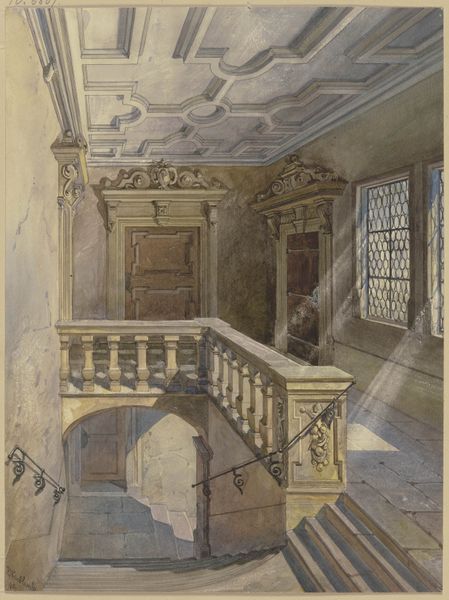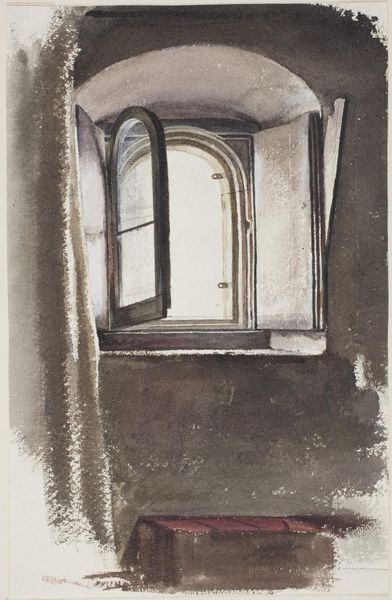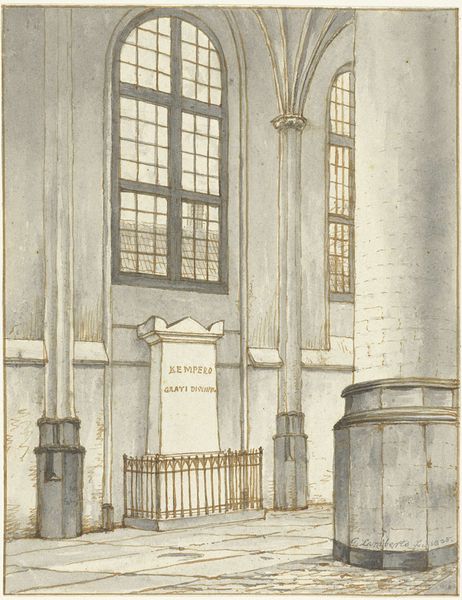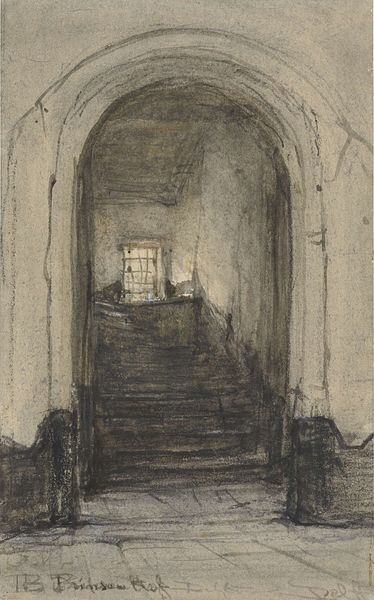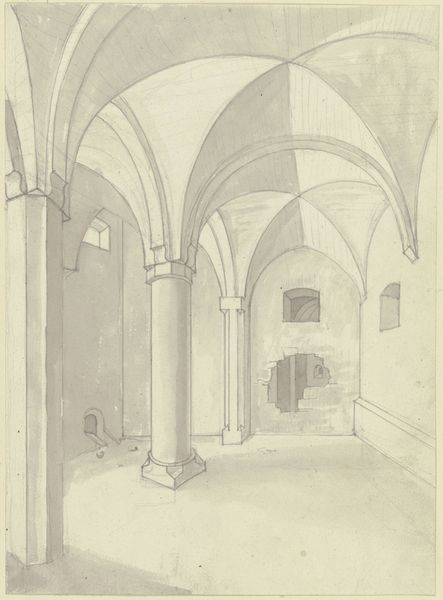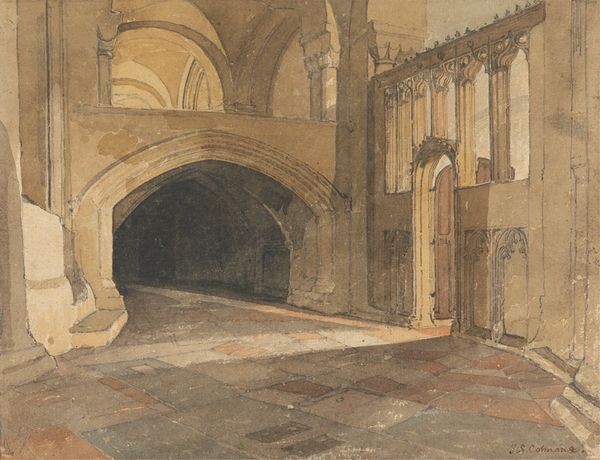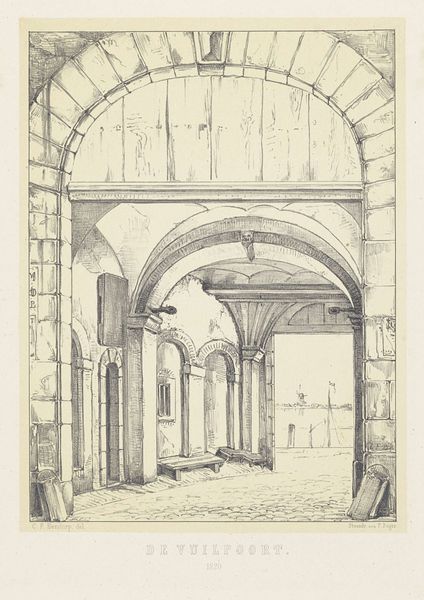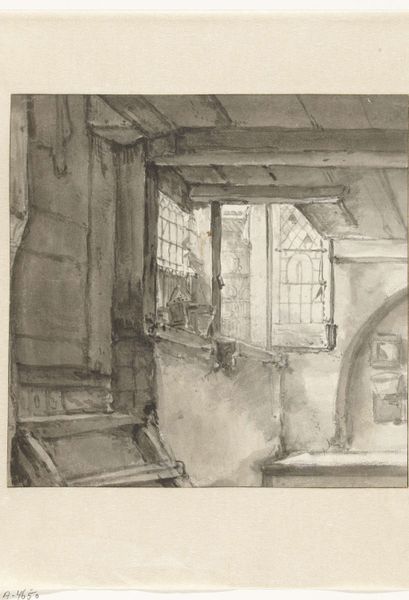
De trap waar Willem van Oranje is vermoord, de kogelgaten en het tekstbordje 1835
0:00
0:00
drawing, painting, paper, watercolor, ink
#
drawing
#
neoclacissism
#
painting
#
landscape
#
perspective
#
paper
#
watercolor
#
ink
#
architectural drawing
#
cityscape
#
watercolor
#
realism
Dimensions: height 270 mm, width 240 mm, height 108 mm, width 103 mm, height 57 mm, width 96 mm
Copyright: Rijks Museum: Open Domain
Editor: So this watercolor and ink drawing by Gerrit Lamberts, from 1835, depicts ‘The Staircase Where William of Orange Was Murdered’. It's… well, it's kind of gloomy, isn't it? All these gray tones. How do you interpret its significance, considering its historical subject? Curator: Exactly. Beyond the architectural rendering, we need to consider the context. This staircase isn’t just any staircase; it’s a site of political assassination. How does Lamberts use the seemingly neutral language of Neoclassical realism to address a politically charged event, particularly the murder of such a pivotal figure as William of Orange? Editor: I see what you mean. It's not just about showing us the space, it’s about… almost memorializing it? Like a crime scene photograph but from decades later? Curator: Precisely. Consider the themes of justice, power, and national identity swirling around William of Orange's legacy. How does representing the location, absent of figures, amplify or challenge existing narratives around his death? Do you see a glorification of violence, or perhaps a condemnation of it? What effect does this choice of the empty stairwell produce? Editor: Hmm, without people, it feels more… like a stage for something that already happened. It makes you think about the weight of history. Maybe Lamberts is suggesting that places themselves can be politically charged, regardless of whether anyone is physically present. Curator: Excellent point. Furthermore, the style—the seeming 'objectivity' of realism—further complicates this. Does this realism make the event feel more 'true'? And how does this truth-telling function in constructing national memory? Editor: I never thought about realism as a tool for shaping national memory! That's a really powerful idea. I thought it was just about copying reality. Curator: It rarely is 'just' that! The drawing highlights how seemingly straightforward representations can be deeply intertwined with politics and collective memory. Editor: I’m walking away with a completely different perspective!
Comments
No comments
Be the first to comment and join the conversation on the ultimate creative platform.
